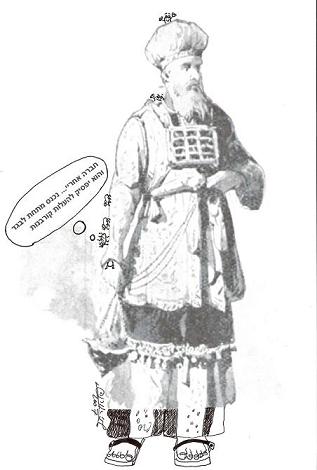
A priest who serves in the Holy Temple must wear specific clothing as part of the atonement ritual and the sacrificial process. It is written “And the priest shall put on his linen garment, and his linen breeches shall he put upon his flesh” (Leviticus 6:10). From the words upon his flesh the sages learned that he must be careful that there be no barrier between his flesh and his clothing. He may not have mud clinging to him and forming a barrier between his clothing and his body. A sage, Rava, asked: what is the rule about wind which blows between his clothing and his body – is this considered a barrier or not? What are the issues under debate? On one hand we can understand the Torah’s requirement upon his flesh to mean that the garment must be actually touching the body, and the air separates the garment and the flesh. On the other hand, the Torah’s demand that it be upon his flesh may not be literal, only demanding that there be no intervening article. Another question was raised by this sage: what is the rule of air in the armpit, for garments typically do not cling to the armpit. Does the Torah demand, here, too, that the garment cling to the flesh of the armpit? And what is the rule if lice intervene between the flesh and the garment? (The Talmudic sages had many other unresolved questions about this issue.)
(Babylonian Talmud, Tractate Zevachim 19a)
